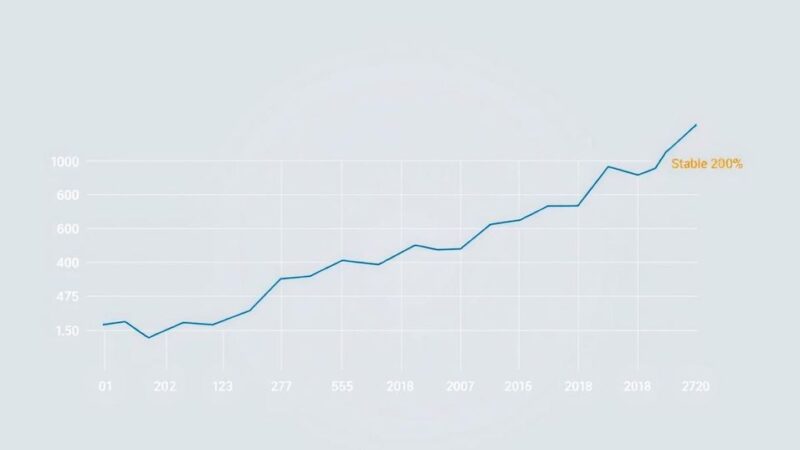Speculation about a turnaround in China’s property market is growing, driven by a significant property sale in Shanghai and improved sales figures in major cities. However, the overall economic landscape remains fragile, particularly in smaller cities facing ongoing challenges, while government efforts aim to stabilize the market.
China’s property market might just be turning a corner, if you can believe the whispers at dinner and the chatter in boardrooms. After months of anxiety shaped by trade tensions, there are signs of hope—especially surrounding the long-standing property crunch that has gripped the country since its peak in 2020. Recent figures and sales have people cautiously optimistic.
The numbers speak volumes: although China’s economy has taken a hit, private-sector growth estimates for 2025 sit within the 4-5% range. One property sale even caused a stir in the media, with a home in Shanghai’s Changning district selling for a eye-popping 270 million yuan ($38 million)—a clear signal that the wealthy are willing to invest despite the economic climate. Such high-profile sales might indicate the end is near for the property crisis that has loomed for years.
Post-2020, property accounted for about 25% of China’s GDP, but those numbers have dwindled to around 15%—a significant slump indeed. Ordinary Chinese citizens have felt the pressure too, with about 70% of household wealth now tied to real estate, down from 80% in 2021. As many developers faltered, trust in the market dipped, impacting consumer spending across the board.
Yet, for the first time in ages, there are hints that the properties’ declines might be leveling off. Home sales by value in early 2025 dropped by less than 3%, a notable improvement compared to a whopping 17% decline the previous year. Analysts from S&P Global predict that while transactions will continue to slip, the decrease will be moderate.
Another key issue was the oversupply of properties. Millions of homes went unsold in the last few years, with about 80 million backlogs last year. However, in major urban centers like Beijing, Shanghai, Guangzhou, and Shenzhen, the excess inventory is dwindling. Between July 2024 and January this year, the time it takes to sell unsold properties in these cities halved from nearly 20 months to 12.5 months. It seems the oversupply might be correcting itself, slowly but surely.
Speaking of correction, Shanghai has been a prime example—transaction numbers have gradually risen since early this year, leading to price increases in the luxury market. Still, the government’s strict regulations on property purchases remain intact. Despite this, more expensive homes are noticeably jumping in value, according to local agents.
One might ask what’s driving this potential recovery? Time could be a factor; historical data suggests housing crashes often take up to four years to stabilize. Also, the Chinese government’s renewed efforts to counteract the downturn include measures like local governments buying unused lands and properties with funding from special bonds and slashing interest rates to spur sales.
Nonetheless, challenges remain. The ongoing trade conflict with the U.S. continues to stress consumer confidence. The National Bureau of Statistics reported that property prices in 70 major cities dipped about 2% in April, while new project sales have also fallen. Macquarie’s Larry Hu noted things are stabilizing, but further advancements will require robust government interventions.
Some regions, like Wenzhou on the southeast coast, still face severe price drops and uncertainty. Local business owners report discounts exceeding 50% in areas bogged down by excess inventory, blaming not just market oversaturation but external pressures like the trade war.
While it seems the property crisis might be lifting in affluent areas, smaller cities are likely to grapple with the fallout longer. Projections suggest flat new home prices in major cities but further declines in smaller towns. Without focused government action, the rebound might remain uneven, raising questions about whether the recovery will be comprehensive or leave many behind.
In summary, China’s property market may finally be seeing signs of recovery after years of downturn. While high-profile sales in cities like Shanghai spark hope, underlying issues—from government actions to ongoing challenges in less affluent areas—still linger. Future policies and economic conditions will ultimately determine if this recovery will be broad-based or merely concentrated in larger cities, leaving smaller towns and their struggling markets behind.
Original Source: www.hindustantimes.com






